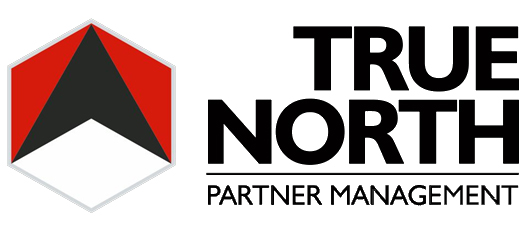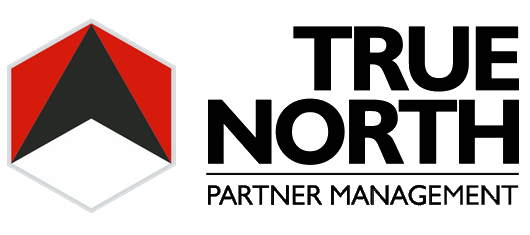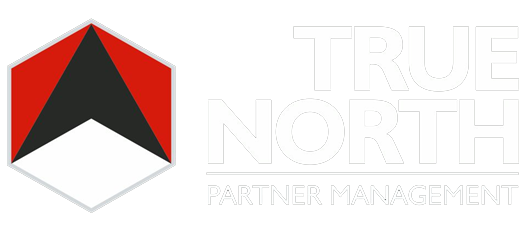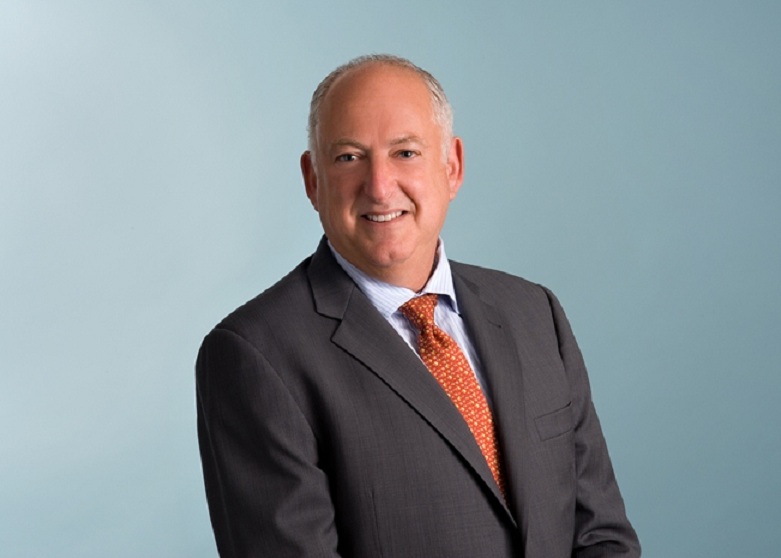The following post originally appeared on Forbes | September 9, 2015
It is difficult to dispute the speed of BigLaw’s evolution. And while firms work tirelessly to keep up with the pace, their efforts to build identities are hindered by fuzzy, poorly articulated industry lines. As it stands, there aren’t many classifications for a firm to choose from: “Full service,” “boutique,” “regional,” “national,” etc. Without sufficiently diverse and articulated industrial definitions for a firm to affiliate with, it can be very difficult to differentiate and package services for the market. And make no bones about it, differentiation is a vital, valuable, and lucrative attribute – or goal – in the market of legal consumption, today.
Nowhere is this more challenging than in the center of the Am Law 200. Without immense size and/or well-vintaged brands, many firms need to work harder, be nimbler, leaner, and more efficient to earn their position on the map. This is often a good thing, as in the words of Henry Ford, “Business is never so healthy as when, like a chicken, it must do a certain amount of scratching around for what it gets.”
Today I speak with Bob Bodian, managing partner of Mintz Levin, which, by revenue, is seated squarely in the middle of the AmLaw 200; they are 101 to be exact. We talk about his take on the market, Mintz Levin’s strategy, and how they, working from the center upward, are seeking to differentiate themselves. See a condensed version of our exchange below:
On Differentiation In The Market
Parnell: Let’s start by talking about what you’ve been doing to differentiate your firm in the market. I think that’s one of the biggest challenges today for much of the AmLaw 200. Because the market has never been exposed to more aggressive outside competition, it has never really fragmented and consolidated in a way that created good clean lines of demarcation; categorical lines that can help a firm define what exactly they are. So it’s tough for most firms out there to really get a tangible differentiator.
Bodian: Well, one of the things we’ve done, which I think is necessary, is focusing on certain core areas where you can offer an expertise that differentiates the firm. In other words, not trying to be everything to everybody, and having a point of distinction. So, in our case, there are certain areas where we feel we definitely differentiate ourselves in the market: life sciences, healthcare, communications and technology, including energy technology. These are what I call “twenty-first century” practice areas. They are also areas in which we are nationally ranked and are very highly rated in industry publications.
On Mintz Levin’s Strategy
Parnell: How did this play into the development of your strategy? Can you talk about your process?
Bodian: Sure. I formed a strategic planning committee. They were tasked with assessing where we are in the market, where the market is headed, what we want to emphasize, where we think our points of differentiation are, and where we think our points of advantage are. The recommendations of that committee became the blueprint for our strategic plan, driving such things as our lateral recruiting and client development. The plan went beyond specific practice areas, industry sectors, and geographic footprint recommendations. It also included goals for furthering our efforts in important areas such as project management, alternative fees, and client service.
It really comes down to playing to your strengths and building on your reputation in a particular area or areas. Take Skadden, for instance: They built their reputation back in the tender offer days, and they had a point of advantage on M&A activities and takeovers; same thing with Wachtell. I think that is the case with Mintz Levin, certainly when it comes to areas like life sciences, health care, technology, and communications. Building on that reputation is how you become a “go-to” firm.
On Work Outside Of Core Areas
Parnell: So, let’s talk about that for just a second. Taking your core areas into consideration, what does this mean for practices or potential deals or work that don’t fall into these?
Bodian: A lot of work shoots off from those, so there are practice areas, like employment, let’s say, where a lot of work derives from clients who have employment issues. And, a lot of that work comes through life science companies, through tech companies, through energy companies, through communications companies. So, it drives a lot of the practice areas as well.
Take our M&A work for example: New York is more finance-oriented, and we do a lot of deal work in the finance world. But a lot of what’s driving our M&A practice now is biotech deals, life science deals, healthcare deals. So our core practice areas act as a driver for a lot of the firm’s work. There are obviously other things that we do as well that don’t tie into that. Private equity is another area that we’ve been stressing, and we also have a nationally known public finance practice.
On Alternative Fee Arrangements
Parnell: Can you talk to me about your stance on alternative fee arrangements?
Bodian: Alternative fees are certainly becoming more widely used at our firm. In fact, last year, thirty percent of our fees were alternative fees, which is about triple the industry average. And when I say “alternative fees,” that doesn’t mean a ten percent discount. I mean fixed fees, capped fees, blended rates, partial-contingent litigation, task-oriented fees, tailored to meet client needs.
So, as part of our IP practice, for example, we have skin in the game with the clients. And with litigation we try to price things out by stages, if we can. It’s really about working with the client. It’s not “how much we charge per hour” and that’s it, it’s “here’s what makes sense,” or “here’s what we’re thinking,” and “here’s how it might work.” It is risk sharing.
My view is ninety-plus percent of lawyers want to do the best job they can for the client, and do it in the most efficient way possible. So I don’t think inefficiencies are intentional. But everybody likes certainty, and alternative fees represent a way, not necessarily tied to the billable hour, of working with clients to come up with something that makes sense.
On Client Satisfaction Surveys And Project Management
Parnell: So what are some other things that you’re doing to better align yourself with the needs of your clients?
Bodian: Well, we do annual, formal client satisfaction surveys using a third party. Obviously, our lawyers are constantly surveying clients on an informal basis; something I personally do as often as I can. Just last week I had lunch with a GC, and, as would be my habit, I asked, “How’s it going? Are you happy with the team you’re working with? Is everything going okay?” Getting this kind of feedback is extremely useful and can help to cement the relationship. However, using a third party for formal client surveys is a much more objective way of doing things. You hear things you might not necessarily hear in direct conversation.
Another thing that we are focused on is project management. We like to think of it as a differentiator because it is part of the future of the law business. Project management is critical; it’s about delivering things efficiently. And if you’re going to have alternative fees, you’ve got to have project management, because you can’t really have one without the other.
Parnell: So what do you do from a project management standpoint? Is something formally instituted?
Bodian: Yes, we have a pricing director, and he’s in charge of helping our attorneys price and manage projects. We’re also collecting all sorts of metrics and data. But actually having somebody who’s responsible for pricing and project management and who works with the attorneys directly has proven to make a huge difference for the firm and our clients.
On New Technology That They Are Using Within The Firm
Parnell: Have you instituted any new technology? Or is there new technology that you’re looking at? What’s your stance on this within the firm?
Bodian: We’re using what we call “project management tools and techniques.” We are using server technology to help us price and manage our work. So on the technological side I’d say that’s definitely something that we’re trying to take advantage of. Of course, it’s only as good as the data that gets plugged into it. So we strongly encourage the attorneys to use it and plug in the data. We code new matters so that we can record it properly.
You can’t talk about technology without talking about privacy. Obviously, this is a big concern for everyone today, including law firms, and of course, our clients. We have a director of information security, whose job it is to make sure we are doing everything possible to keep our client’s and the firm’s information secure.
Parnell: Have you seen any actual security audits by clients?
Bodian: Yes, a few clients have sent us questionnaires, and things like that, where we need to provide certain information to them as to what our procedures are, what our policies are, how they’re enforced, that kind of thing. So we have seen some of those.
On Defining And Fostering The Growth Of Their Culture
Parnell: Have you done anything to formally define your culture? And secondly, what do you do to enforce or promote your culture?
Bodian: Mintz Levin has always had a very strong culture and I think it’s critical to the success of any law firm. We have a number of events and initiatives throughout the year to build that culture, particularly as the firm continues to grow.
The partners have an annual offsite retreat, with all partners and spouses and significant others invited. It really does go a long way towards creating that “glue” that is so important to firm culture. One of the things that I talked about at the most recent retreat is that “culture eats strategy for breakfast.” No matter what you do, culture is really, in a lot ways, the most important thing.
In terms of our culture, if I had to describe it, I would say it’s extremely open, with an emphasis on communication. And, we really try to make sure that everyone feels like they’re part of an organization and have a role in our success. So for example, I, together with my COO and CMO, go to every office and give a formal state-of-the-firm presentation. These meetings are open to everyone and are particularly important for the associates and staff who do not attend the retreats. It is equally important for these individuals to understand the firm’s economics, our strategy, and the role that each of us play in the success of the firm.
We also provide all partners with the policy committee agenda in advance of each meeting so that the partners are informed and can provide input. And we have a meeting that is open to all partners after each policy committee meeting to discuss what the policy committee is doing.
Finally, I believe that I am here to help my partners retain and satisfy our clients. And I, and other members of management, spend a good deal of time trying to create opportunity for our colleagues. Leading from the front and setting an example on collaboration and assistance sets a tone regarding culture.
On Incentivizing Collaboration Within The Firm
Parnell: Let me ask you about collaboration, in particular. How are you incentivizing that?
Bodian: This also goes toward putting your money where your mouth is. We have made significant changes in the way we incentivize people. One of the biggest changes was to our production credit process. We have put into place a process that incentivizes the attorneys to, rather than go on an initial pitch meeting by themselves, think about the client’s business and who else in the firm might be able to bring some value to that client. Also, we give credit by matters, not just by clients, so that our partners have an incentive to build the relationships with the clients, which is better for the clients and for the firm.
Clients still have one main point of contact: the relationship partner. But in terms of allocating production credit, those who build and strengthen and grow the relationships stand to benefit along with the originator of the business. It varies both in substance and message from what I consider to be the outdated system of a partner getting client origination credit and keeping it indefinitely.
On Lateral Candidate Integration
Parnell: How about lateral integration? Can we talk about that for a moment?
Bodian: I’m glad you asked me that. I would say that is one of the areas where we are incredibly strong. Regarding how we do it, let me give you the starting point. I meet a lot of lateral candidates at the partner level, and unless I see how Mintz Levin is going to bring some advantage to them — in other words, how they integrate within the firm — we don’t proceed any further. Unless we see integration before they even get here, they never get here, even if they’re very talented and have a good practice, because if there’s no advantage to them coming to Mintz Levin, then they shouldn’t. That’s my view.
Parnell: So, upfront, rather than looking at it from the viewpoint of “What advantage do they bring to us?” you’re saying “What advantage do we bring to them?”
Bodian: Yes. And if I don’t see any, then it doesn’t make any sense to me. I’ve said to candidates, “You should be talking to a firm that has an international focus,” or “You need a practice that has X.“ So, if that’s your starting point, it makes lateral integration way easier because every single lateral that comes here, we already have a very good idea of how they’re going to integrate.
When we do bring on a lateral, we have a very robust integration process. Working with our business development and marketing team, we put a plan in place even before the lateral starts as to who they will be meeting with and which clients they should be in front of, so that within the first six weeks, they are meeting with partners throughout all of our offices. A business development professional is with them in every single meeting, travels with them, and takes notes, and follows up. It is during those meetings that client introductions are organized.
Almost every single lateral makes a comment within the first six months or so saying something like, “This is amazing.” We provide an enormous amount of support and the resources they need to move and expand their practice. And they help expand other partner’s practices, which is the whole point.
On The Leverage Pyramid
Parnell: What are your thoughts on the leverage pyramid? How do you see this continuing to evolve?
Bodian: Honestly, I’m not sure. I think there is a real dichotomy: For some firms I don’t think it’s going to change, and in fact it might get more leveraged — like for the AmLaw top 25. So firms that are doing huge cases and the mega deals, I think maybe might even become more leveraged, because the nature of the multi-billion dollar law suit, or the multi-billion dollar deal. The financial model for them is high leverage, and the matters require it, and you’re going to have a lot of bodies on those cases, or on those deals.
I think for everyone else in the world, leverage is going to go the other way. Clients, for the more middle-priced or middle-sized cases and deals, want partner attention and contact, so that the leverage might go the other way. Mintz has become less leveraged in the last ten years.
On The Ideal Skill Set Of An Attorney
Parnell: From your viewpoint, what does the skill set look like of an ideal attorney? Looked at from another viewpoint, what kind of skill set is going to be most valuable the future?
Bodian: The main thing is you want to be a “trusted advisor.” If you can get in a position of being a trusted advisor to a client, then you’re extremely valuable to the client and to the law firm, and you’re not going to be commoditized. If you’re a trusted advisor and the client wants your advice – they’re looking to you to help with all these things — they’re not going to do an RFP and get some other firm.
One of the things that will help you become a trusted advisor is optimism. It’s hard to develop that, but for a skillset, I’d say that optimism and perseverance are critically important. Think about it, if you’re not optimistic, then you’re not going to get anywhere.
Realism, too. You’ve got to be realistic, but that is not inconsistent with optimism and perseverance. That’s true for everybody, not just lawyers. But lawyers aren’t exempt from it. God forbid I have a brain tumor and I go to my doctor, and he looks at me and says, “You’re going to die.” I get that I might, and I already kind of knew that, but even if it’s twenty percent, you want some degree of optimism and a plan. Maybe “You’ve got a twenty percent shot because this is how it is, based on what you have, and we’ve been working on this new regimen that’s been helpful for a couple of people recently, and I’ve done a hundred of them in the last six months, and we’re going to do a, b and c, and I feel pretty good that you’re a good candidate for that.” You know, there’s ways of saying things, and there’s ways of saying things… So, I think it’s really important to work to find solutions and to convey that you are trying to be helpful, even if delivering a difficult message.
Creativity and flexibility, I think also are important. So, before I came to Mintz, I had a small firm called Bodian & Eames. David Eames was my partner, and we used to tell everyone in our firm, there are only two words you have to know: Can do. If you don’t know anything else, you’re fine, as long as you get that right. I say it a little differently at Mintz Levin, but what I tell everyone is “Get to yes. That’s your job: get to yes.” Don’t do a reflexive “no.” Try to figure it out. It doesn’t mean you can always get to yes, but you really have to try your hardest. That’s why we’re there: Trying to come up with a way to get to solutions. That’s my idea of a skillset.
Email: dparnell@davidjparnell.com Twitter: @davidjparnell
Books: The Failing Law Firm: Symptoms And Remedies; In-House: A Lawyer’s Guide To Getting A Corporate Legal Position



